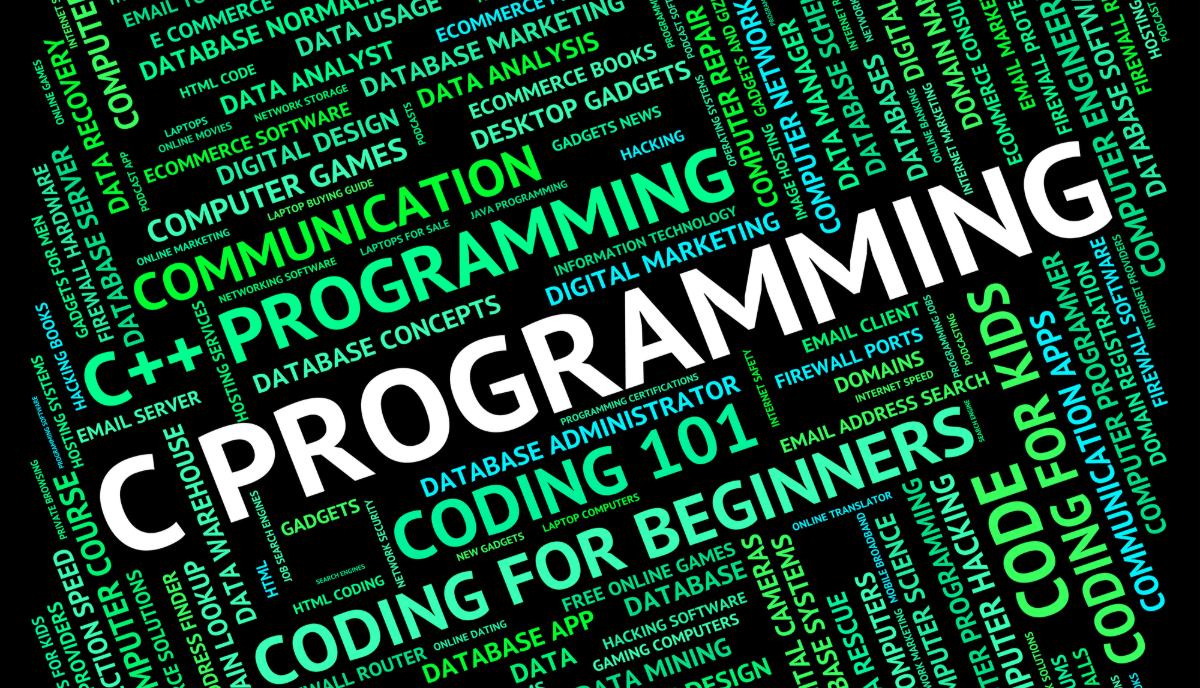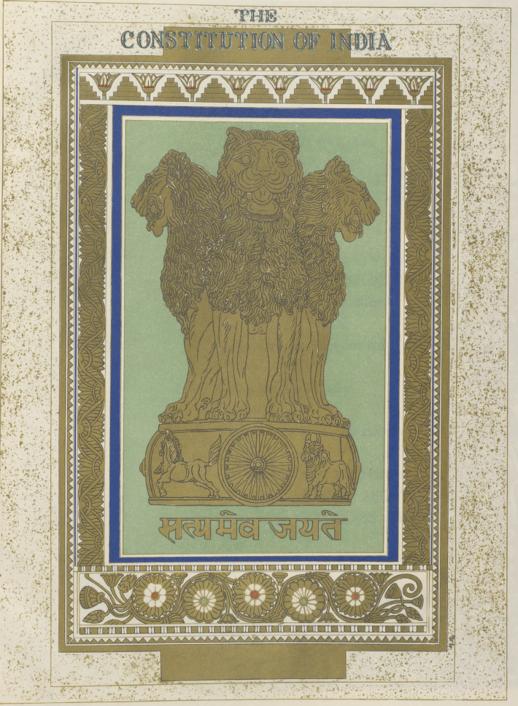Search results: 76
Course Outcomes:
- CO 1 Describe the features of a database system and its application and compare various types of data models.
- CO 2 Construct an ER Model for a given problem and transform it into a relation database schema.
- CO 3 Formulate solution to a query problem using SQL Commands, relational algebra, tuple calculus and domain calculus.
- CO 4 Explain the need of normalization and normalize a given relation to the desired normal form.
- CO 5 Explain different approaches of transaction processing and concurrency control

Course Outcome
- Construct Flowchart and Write algorithms for solving basic problems.
- Write ‘C’ programs that incorporate use of variables, operators and expressions along with data types.
- Write simple programs using the basic elements like control statements, functions, arrays and strings.
- Write advanced programs using the concepts of pointers, structures, unions and enumerated data types.
- Apply pre-processor directives and basic file handling and graphics operations in advanced programming.
- Construct Flowchart and Write algorithms for solving basic problems.
- Write ‘C’ programs that incorporate use of variables, operators and expressions along with data types.
- Write simple programs using the basic elements like control statements, functions, arrays and strings.
- Write advanced programs using the concepts of pointers, structures, unions and enumerated data types.
- Apply pre-processor directives and basic file handling and graphics operations in advanced programming.
- Teacher: DR AMIT KUMAR GUPTA [MCA]
The objectives of this course are to make the student understand programming language, programming, concepts of Loops, reading a set of Data, stepwise refinement, Functions, Control structure, Arrays. After completion of this course the student is expected to analyze the real life problem and write a program in ‘C’ language to solve the problem. The main emphasis of the course will be on problem solving aspect i.e. developing proper algorithms. After completion of the course the student will be able to
• Develop efficient algorithms for solving a problem.
• Use the various constructs of a programming language viz. conditional, iteration and recursion.
• Implement the algorithms in “C” language.
• Use simple data structures like arrays, stacks and linked list in solving problems.
• Handling File in “C”.

- Teacher: DR SANGEETA ARORA [MCA]
- Teacher: MR PRASHANT AGARWAL [MCA]
Course Outcomes
1. To understand internet and web
designing concepts.
2. To create web pages using HTML, CSS and
by using various designing frameworks and libraries.
3. To build dynamic web pages using
client side scripting language JavaScript and to write XML document.
4. To build interactive web application
using PHP.
5. To construct and manipulate database
of web application using PHP and MySQL.
The objectives of this course are to make the student understand programming language, programming, concepts of Loops, reading a set of Data, stepwise refinement, Functions, Control structure, Arrays. After completion of this course the student is expected to analyze the real life problem and write a program in ‘C’ language to solve the problem. The main emphasis of the course will be on problem solving aspect i.e. developing proper algorithms. After completion of the course the student will be able to
• Develop efficient algorithms for solving a problem.
• Use the various constructs of a programming language viz. conditional, iteration and recursion.
• Implement the algorithms in “C” language.
• Use simple data structures like arrays, stacks and linked list in solving problems.
• Handling File in “C”.

- Teacher: MR PRASHANT AGARWAL [MCA]
Course Outcome
- Construct Flowchart and Write algorithms for solving basic problems.
- Write ‘C’ programs that incorporate use of variables, operators and expressions along with data types.
- Write simple programs using the basic elements like control statements, functions, arrays and strings.
- Write advanced programs using the concepts of pointers, structures, unions and enumerated data types.
- Apply pre-processor directives and basic file handling and graphics operations in advanced programming.
- Construct Flowchart and Write algorithms for solving basic problems.
- Write ‘C’ programs that incorporate use of variables, operators and expressions along with data types.
- Write simple programs using the basic elements like control statements, functions, arrays and strings.
- Write advanced programs using the concepts of pointers, structures, unions and enumerated data types.
- Apply pre-processor directives and basic file handling and graphics operations in advanced programming.
Course Outcomes
1. To understand internet and web designing concepts.
2. To create web pages using HTML, CSS and by using various designing frameworks and libraries.
3. To build dynamic web pages using client side scripting language JavaScript and to write XML document.
4. To build interactive web application using PHP.
5. To construct and manipulate database of web application using PHP and MySQL.
Course Outcome
- Construct Flowchart and Write algorithms for solving basic problems.
- Write ‘C’ programs that incorporate use of variables, operators and expressions along with data types.
- Write simple programs using the basic elements like control statements, functions, arrays and strings.
- Write advanced programs using the concepts of pointers, structures, unions and enumerated data types.
- Apply pre-processor directives and basic file handling and graphics operations in advanced programming.
- Construct Flowchart and Write algorithms for solving basic problems.
- Write ‘C’ programs that incorporate use of variables, operators and expressions along with data types.
- Write simple programs using the basic elements like control statements, functions, arrays and strings.
- Write advanced programs using the concepts of pointers, structures, unions and enumerated data types.
- Apply pre-processor directives and basic file handling and graphics operations in advanced programming.
- Teacher: Dr. Shelly Gupta Gupta
UNIT-I: (8) Introduction: Introduction to Software Engineering, Software Components, Software Characteristics, Software Crisis, Software Engineering Processes, Similarity and Differences from Conventional Engineering Processes, Software Quality Attributes. Software Development Life Cycle (SDLC) Models: Water Fall Model, Prototype Model, Spiral Model, Evolutionary Development Models, Iterative Enhancement Models.
UNIT-II: (8) Software Requirement Specifications (SRS): Requirement Engineering Process: Elicitation, Analysis, Documentation, Review and Management of User Needs, Feasibility Study, Information Modeling, Data Flow Diagrams, Entity Relationship Diagrams, Decision Tables, SRS Document, IEEE Standards for SRS. Software Quality Assurance :(SQA): Verification and Validation, SQA Plans, Software Quality Frameworks, ISO 9000 Models, SEI-CMM Model.
UNIT-III: (8) Software Design: Basic Concept of Software Design, Architectural Design, Low Level Design: Modularization, Design Structure Charts, Pseudo Codes, Flow Charts, Coupling and Cohesion Measures, Design Strategies: Function Oriented Design, Object Oriented Design, Top-Down and Bottom-Up Design. Software Measurement and Metrics: Various Size Oriented Measures: HalesteSoftware Science, Function Point (FP) Based Measures, Cyclomatic Complexity Measures: Control Flow Graphs
UNIT-IV: (8) Software Testing: Testing Objectives, UNIT Testing, Integration Testing, 8 Acceptance Testing, Regression Testing,Testing for functionality and Testing for Performance, Top-Down and Bottom-Up Testing Strategies: Test Drivers and Test Stubs, Structural Testing (White Box Testing), Functional Testing (Black Box Testing), Test Data Suit Preparation, Alpha and Beta Testing of Products. Static Testing Strategies: Formal Technical Reviews (Peer Reviews), Walk Through, Code Inspection, Compliance with Design and Coding Standards.
UNIT-V: (8)
Software Maintenance and Software Project Management: Software as an Evolutionary Entity, Need for maintenance, Categories of Maintenance: Preventive, Corrective and Perfective Maintenance, Cost of Maintenance, Software Re-Engineering, Reverse Engineering. Software Configuration Management Activities, Change Control Process, Software Version Control, An Overview of CASE Tools. Estimation of Various Parameters such as Cost, Efforts, Schedule/Duration, Constructive Cost Models (COCOMO), Resource allocation Models, Software Risk Analysis and Management.
- Teacher: DR AMIT KUMAR GUPTA [MCA]
To realize the significance of constitution of India to students from all walks of life and help them to understand the basic concepts of Indian constitution.
To identify the importance of fundamental rights as well as fundamental duties.
To understand the functioning of Union, State and Local Governments in Indian federal system.
To learn procedure and effects of emergency, composition and activities of election
commission and amendment procedure

- Teacher: DR. MANISH BHARDWAJ CSIT

